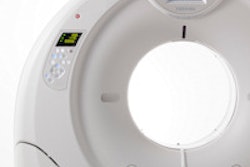Dear Women's Imaging Insider,
The year may be coming to a close, but we still have several interesting news stories on women's imaging for you. This month's RSNA meeting especially produced some research that we're sure you'll find noteworthy.
Researchers in the U.K. have found that body CT can pick up on breast abnormalities. What should you look for? What distinguishes between benign and malignant features? Find out.
Also from RSNA 2013, digital breast tomosynthesis took on a prominent role. Are we finally at the point where tomosynthesis can replace full-field digital mammography? How does tomosynthesis stack up? Read about research by Dr. Per Skaane, PhD, to find out the answer.
Be sure to take a look at another article describing how digital breast tomosynthesis reduced recall rates and increased cancer detection in a large breast cancer screening program. Click here to read it.
Speaking of replacing modalities, staff writer Wayne Forrest reports that evidence for the efficacy of whole-body FDG-PET/MRI continues to mount. The hybrid modality outperformed MRI alone for staging women with suspected pelvic malignancies in a German study. Read more here.
Also in your Women's Imaging Digital Community, a Saudi Arabian facility becomes the first in an Arab country to offer intraoperative radiation therapy (IORT) for breast cancer treatment. It's a trend that's catching fire because three other cancer centers in the country have adopted the technique. Discover why IORT is so popular.
In addition, a group from Scotland determined that high tumor stiffness at shear-wave elastography appears to predict lymph node metastasis in women with invasive breast cancer, and automated breast ultrasound turned in a similar diagnostic performance to handheld ultrasound.
Plenty of other articles can be found in your Women's Imaging Digital Community, so be sure to scroll below to read the rest.
Until next time, wishing you and yours a bright and happy new year.




















